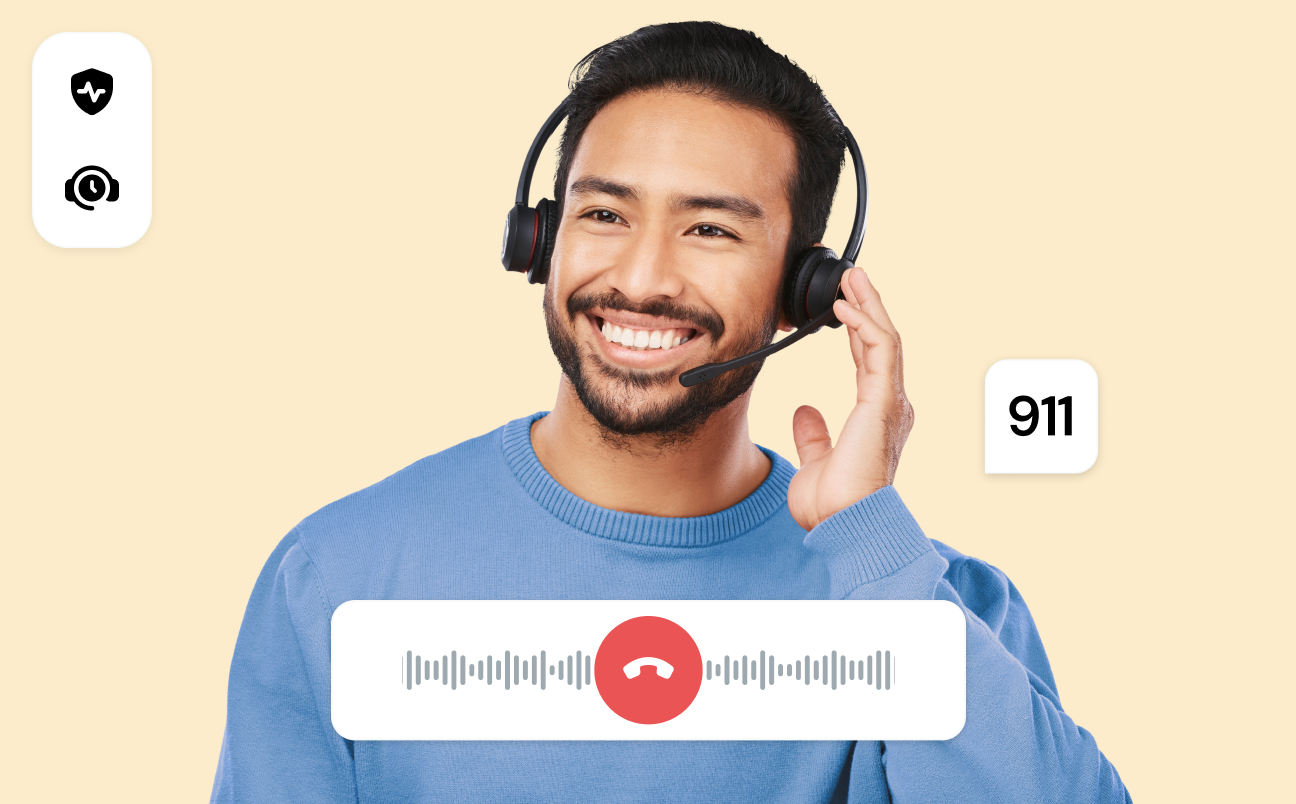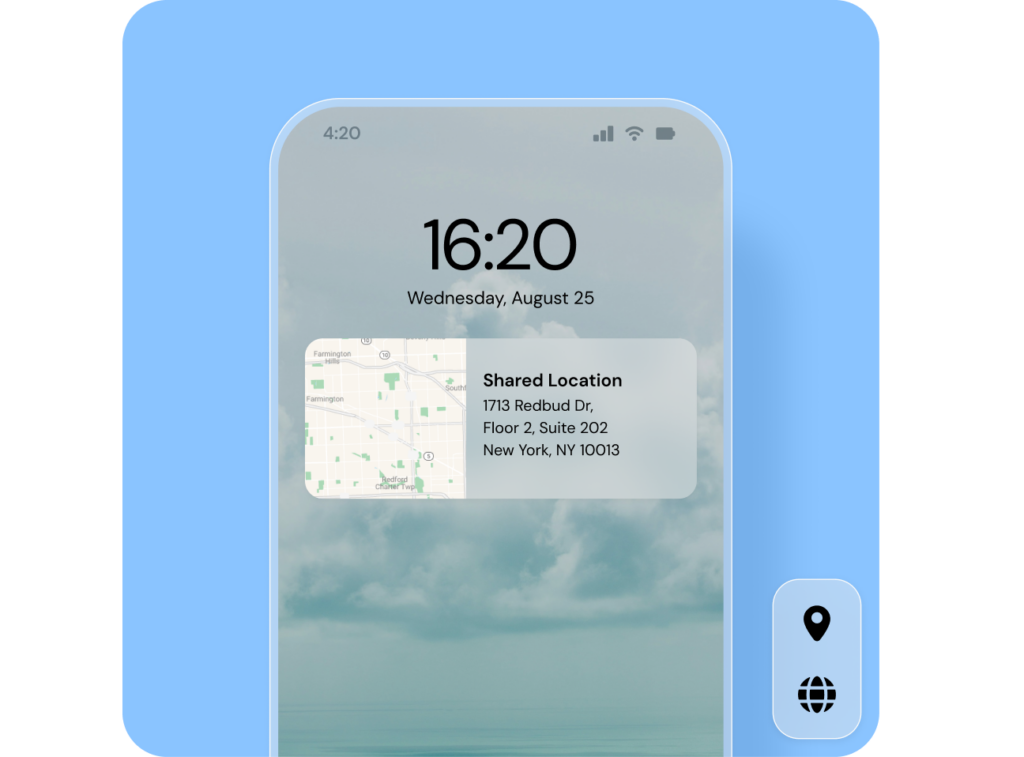Insights
Your enterprise guide to E911 compliance

Insights

Every company and organization understands how crucial it is to provide critical emergency services. At the same time, ensuring your business meets all the technical E911 standards and implementing them without disrupting the day-to-day can be a challenge. But with the right approach, it doesn’t have to be. In this guide, we’ll take a look at all the technical requirements and walk you through the entire process.
You dial 911. The dispatcher answers immediately, knowing your precise location without you saying a word. Help arrives within minutes.
We may take this swift process for granted, but it wasn’t always this way. Before E911 took effect in 1999, emergency operators relied on callers to verbally provide their location, causing delays and, in some cases, tragic outcomes. Fast-forward a few decades and today’s emergency systems provide fast communication and precise location details for quicker and more accurate responses than ever before.
However, for enterprises, implementing these life-saving capabilities can seem complex. With technology maturing, hybrid work environments becoming more common, and regulations constantly evolving, staying E911-compliant across your telecom infrastructure may look overwhelming.
However, ensuring your organization meets current E911 requirements can be managed without operational disruptions or compliance risks. This guide will walk you through everything you need to know to protect your people and your business.
Since 1968, the United States has relied on the 911 system to connect citizens with emergency services. This standardized system started to replace the local ten-digit phone numbers people had to dial to reach police, fire, or emergency services, and provide detailed location instructions.
However, as new technologies like wireless phones and VoIP became more widespread, attaching a phone number to a precise location became more difficult. The 911 Act Congress passed in 1999 tackled these challenges by regulating 911 calls coming through VoIP, mobile satellite devices, telematics (like the SOS button in cars), and Text Telephone Devices used by people with disabilities.

Another important part of the 911 Act was to ensure 911 systems automatically report the telephone number and location of 911 calls. This is called Enhanced 911, or E911. Later laws like Kari’s Law and RAY BAUM’s Act implemented similar requirements for 911 communication from other devices and systems as well.
These upgrades make sure that whenever someone dials 911 from any device, the operator immediately knows where to send first responders through precise dispatchable location data, including street address, floor, or room number.

Today, Kari’s Law and RAY BAUM’s Act are the foundation for E911 compliance for businesses.
For companies, E911 compliance is mandated by two key federal statutes: Kari’s Law (2018) and RAY BAUM’s Act (2019), as regulated by the Federal Communications Commission (FCC).
Kari’s Law and RAY BAUM’s Act improve E911 services by fixing gaps in earlier 911 regulations.
These regulations strengthen emergency response, ensuring that no matter where a 911 call comes from – an office, remote site, or hotel – calls can go out fast and help arrives quickly to the right location.
What do these developments mean for your company? Businesses have to ensure that any multi-line telephone systems (manufactured or installed after February 16, 2020) they provide for employees comply with E911 regulations. This means that enterprises have to examine their telecommunication stack and determine whether they meet compliance standards or not. Not only is it required by law, but it keeps your employees safe.
Say there’s a workplace medical emergency. When an employee experiences a heart attack or severe injury, immediate access to emergency services can mean the difference between life and death.
In a phased approach from January 6, 2021 to January 6, 2022, businesses were required to ensure their communication systems provided:
These requirements include VoIP services and unified communication platforms as well as multi-line telephone systems.
Remember to investigate state and local E911 requirements in addition to federal requirements. Many jurisdictions impose specific provisions that may impact your compliance obligations.
At the same time, there’s more to E911 compliance than just following the law.
Compliance isn’t only legally required, staying up to date with E911 standards also protects your employees, avoids costly penalties, shields your organization from potential civil lawsuits, and maintains your reputation as an employer who prioritizes workplace safety.
Your business needs to have a complete safety protocol for human resources and facilities. Complying with E911 requirements allows you to adequately plan for the safety of employees in a variety of work environments like home offices, satellite campuses, hospitals, large office buildings, and hotels.
If your business doesn’t alert security teams and other key personnel when a 911 call has been made, or if you fail to provide a dispatchable location at the time of the call, it’ll most likely delay help and waste precious time, making it difficult for emergency personnel to help the caller. It can be the difference between life and death for the people in need.
If your business fails to comply with regulations, the government may levy hefty fines and other penalties or even threaten suspension in extreme cases. You’ll also lose the trust of your customers and business partners if there’s legal action against your company.
To achieve E911 compliance, your telecommunication stack must support four essential capabilities:
Some requirements, like removing dialing prefixes, are relatively simple to implement. Others present significant technical challenges, especially if you’re dealing with a patchwork of communication technologies like an on-premises PBX and a cloud-based contact center.
Developing a comprehensive E911 compliance strategy is therefore a prudent first step before making technical changes to your system.
Creating an E911 compliance strategy begins with auditing your current telecommunications environment. Many enterprises operate with a mix of legacy systems and modern solutions, creating potential compliance gaps.
Start by examining your existing infrastructure against compliance requirements:
After identifying gaps, develop an implementation roadmap that addresses high-risk areas first while minimizing operational disruption. Consider consulting with E911 specialists to navigate the complex regulatory landscape.
For detailed guidance on developing a comprehensive E911 compliance strategy, download Sinch’s Ultimate Guide to E911 Compliance.
A term you might have come across when reading about E911 is NG911. What does it mean, and how does it relate to E911?
NG911 stands for Next Generation 911, and its purpose is to upgrade emergency services from analog to IP-based infrastructure, making them faster, more resilient, and better equipped to handle call overload. It also enables the seamless transfer of digital data – videos, photos, and medical records – from smart devices to Emergency Communication Centers (ECCs) and first responders.
While NG911 doesn’t affect business compliance, it significantly impacts PSAPs, ECCs, and first responders, who must adapt their systems and processes. Adoption is phased. According to the latest 911 report, almost all states have started NG911 adaptation, with several states already being fully operational. Sinch plays a key role in this early adoption, ensuring compliance and supporting municipalities, counties, and states with our NG911 services.
E911 compliance serves multiple purposes: It protects your employees, maintains your company reputation, helps avoid financial penalties, and reduces legal liability. Meeting the requirements of federal statutes like Kari’s Law and RAY BAUM’s Act requires a careful assessment of your current phone systems and a practical implementation plan that covers both office and remote workers.
Achieving compliance can be challenging for organizations with complex phone systems or distributed workforces. However, working with a specialized telecommunications provider can simplify this process.
Sinch, for example, offers E911 compliance solutions backed by over 25 years of experience and expertise, so you can rest assured that our team will offer advice and support throughout the entire process.
Our 911 services run on our own network, the largest independent network in the U.S., ensuring dependable call transport through our reliable network infrastructure. We easily handle an average of 3.7 million 911 calls monthly, support millions of endpoints with emergency services, and we meet all requirements for E911 like RAY BAUM’s Act and Kari’s Law.
We’re also prepared for future emergency service needs with NG911 capabilities and offer easy and cost-effective migration – paving a smooth path to compliance.
Starting to take action now ensures your telecommunication systems will work properly when emergencies occur.